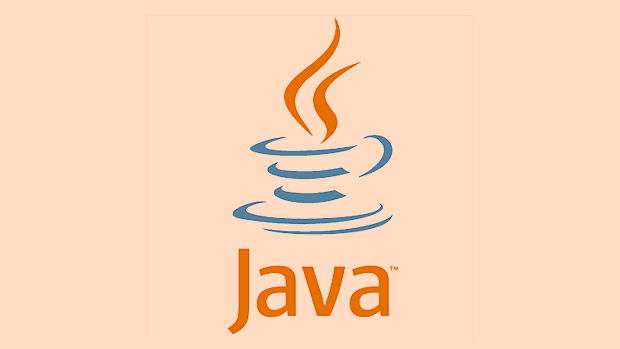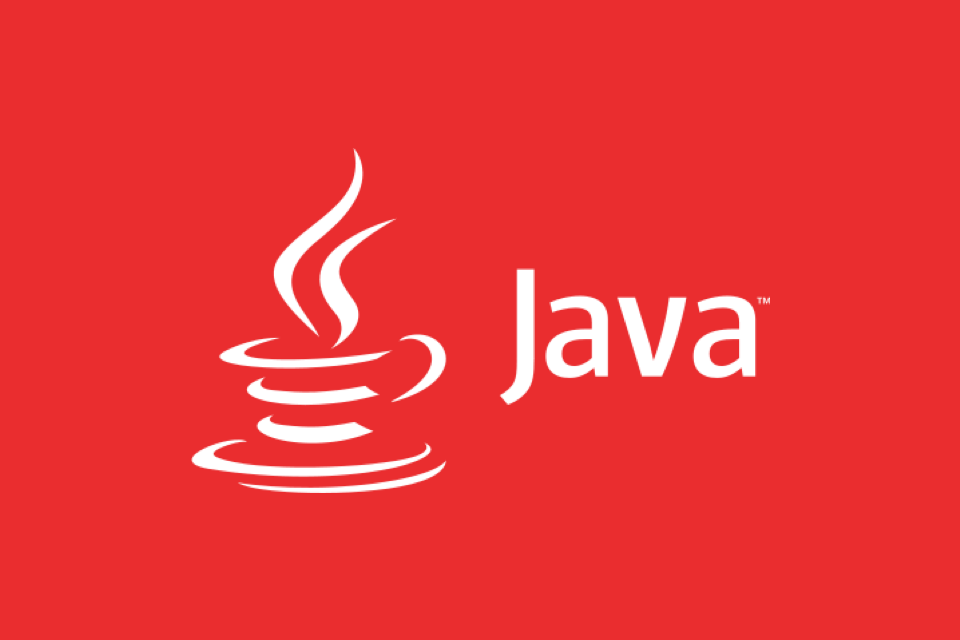Java Interview Questions for Senior Engineers
Jul 31, 2025 am 06:26 AMSenior Java interviews test deep expertise in JVM internals, concurrency, performance, and system design. 1. Understand JVM memory model, GC generations, class loading, and use tools like jmap and VisualVM to diagnose memory issues. 2. Master concurrency beyond synchronized—know ReentrantLock, JMM, happens-before, volatile, and design thread-safe structures while avoiding deadlocks. 3. Optimize performance by reducing GC pressure, using object pooling, minimizing serialization, leveraging escape analysis, and selecting efficient data structures. 4. Apply design patterns judiciously—favor composition, use functional interfaces, and design scalable systems like rate limiters or plugin architectures. 5. Stay current with Java 8–21+ features: virtual threads for high concurrency, records for immutability, sealed classes, var, and proper Optional use. 6. Practice defensive exception handling—use unchecked exceptions for programming errors, wrap low-level exceptions, and leverage try-with-resources. 7. Solve real-world problems like building a TTL key-value store or retry mechanism by clarifying requirements, ensuring thread safety, and balancing trade-offs. Interviewers seek engineers who can own services end-to-end, optimize for production, and make sound technical decisions.

Senior Java engineer interviews go beyond syntax and basic concepts—they test deep understanding of the language, system design, performance optimization, concurrency, and real-world problem-solving. Here’s a practical breakdown of common and challenging Java interview questions you’re likely to face as a senior engineer, along with what interviewers are really looking for.

1. Explain JVM Internals: Memory Model, GC, and Class Loading
This is a staple for senior roles. Interviewers want to see you understand what happens under the hood.
Common questions:

- How is memory divided in the JVM?
- What are the differences between young and old generations in GC?
- Explain how the class loader works (bootstrap, extension, application).
- What are memory leaks in Java, and how can you detect them?
What they’re really asking: Can you debug performance issues? Do you understand how object lifecycle and memory pressure affect application stability?
Key points to know:

- Heap vs. stack, metaspace (replaced permgen), and native memory
- GC algorithms: G1GC, CMS (deprecated), ZGC, Shenandoah
- How
OutOfMemoryErrorandStackOverflowErroroccur - Using tools like
jmap,jstack,VisualVM, or async-profiler
Example: If your service slows down over time, knowing how to analyze GC logs or heap dumps can pinpoint whether it’s a memory leak, inefficient object creation, or GC tuning issue.
2. Concurrency and Multithreading: Beyond synchronized
Senior engineers are expected to design thread-safe, high-throughput systems.
Typical questions:
- Difference between
synchronized,ReentrantLock, andStampedLock - What is the Java Memory Model (JMM)? Explain
happens-before - How do
volatileandfinalhelp with visibility? - Implement a thread-safe cache or bounded blocking queue from scratch
- When would you use
CompletableFuturevsReactive Streams?
What they want: Proof you’ve dealt with race conditions, deadlocks, and performance bottlenecks in concurrent code.
Deep-dive areas:
- CAS (Compare-and-Swap) and how
AtomicIntegerworks - Thread pools:
FixedThreadPoolvsCachedThreadPoolvsForkJoinPool - Avoiding false sharing and understanding CPU cache lines
- Structuring async workflows with
CompletableFuture(e.g., chaining, combining)
Pro tip: Be ready to write code that avoids deadlock using lock ordering or timeouts with
tryLock().
3. Performance Optimization and Low-Latency Design
This separates mid-level from senior engineers.
Sample questions:
- How would you reduce GC pressure in a high-throughput service?
- What’s object pooling, and when is it appropriate?
- How do you minimize serialization overhead (e.g., in Kafka or REST)?
- Explain escape analysis and stack allocation
Expectations: You’ve optimized real systems, not just read about theory.
Strong answers include:
- Using primitives or off-heap memory (via
ByteBufferor libraries like Chronicle) - Reducing object creation in hot paths
- Choosing the right data structures (e.g.,
ArrayListvsLinkedList) - Profiling with async-profiler or JITWatch to find bottlenecks
Example: Instead of returning
List<String>from an API, consider if aSetor primitive array would reduce downstream processing cost.
4. Design Patterns and System Architecture with Java
You’ll be asked to design scalable, maintainable systems using Java-specific strengths.
Possible questions:
- Design a rate limiter using
SemaphoreorTokenBucket - How would you structure a microservice using Spring Boot and resilience patterns?
- When would you use the
VisitororStrategypattern in Java? - Implement a plugin architecture using
ServiceLoader
They’re evaluating: Your ability to balance flexibility, performance, and clarity in large codebases.
Senior-level insight:
- Favor composition over inheritance (especially with lambdas)
- Use functional interfaces and method references to reduce boilerplate
- Know when patterns are overkill (e.g., don’t force Singleton everywhere)
Real talk: Modern Java often replaces classic patterns with lambdas. For example,
Strategypattern can be aFunction<T,R>orBiPredicate.
5. Java Evolution: From 8 to 21+
You’re expected to know modern Java and its impact on code quality.
Questions you might get:
- What are virtual threads (Project Loom), and how do they change concurrency?
- Explain
var(local variable type inference)—when should you use it? - How do records and sealed classes improve domain modeling?
- What are the benefits of reactive programming with
FlowAPI?
Why it matters: Companies want to modernize tech stacks. Senior engineers should guide that evolution.
Be ready to compare:
- Thread-per-request vs virtual threads for I/O-heavy apps
- Records vs Lombok (immutability, clarity, debugging)
- Using
Optionalproperly (not in fields or serialization)
Example: Virtual threads can allow 1M concurrent requests with minimal memory—huge for scalable APIs.
6. Exception Handling and Defensive Programming
Not flashy, but critical in production systems.
Questions:
- Checked vs unchecked exceptions—when to use each?
- Best practices for logging and monitoring exceptions
- How to design recoverable vs fatal error paths
Senior-level take:
- Don’t catch and ignore exceptions
- Wrap low-level exceptions into meaningful domain ones
- Use
try-with-resourcesandAutoCloseablecorrectly - Understand how exception handling affects performance (e.g., deep stack traces)
7. Real-World Problem Solving (Coding + Design)
You’ll get open-ended problems like:
- Design a thread-safe in-memory key-value store with TTL
- Build a retry mechanism with exponential backoff
- Optimize a slow REST endpoint in Spring Boot
Tips:
- Clarify requirements first (scale, latency, consistency)
- Think about thread safety, error handling, monitoring
- Mention trade-offs (e.g., accuracy vs performance)
- Use Java 8+ features appropriately (streams, optionals, records)
Final Thoughts
Senior Java interviews aren’t about memorizing answers. They test:
- Depth in JVM and concurrency
- Real experience with performance and stability
- Judgment in design and trade-offs
- Staying current with Java’s evolution
You don’t need to know everything, but you should be able to reason through problems, debug effectively, and mentor others.
Basically, show you can own a service end-to-end—not just write code, but make it fast, safe, and maintainable.
The above is the detailed content of Java Interview Questions for Senior Engineers. For more information, please follow other related articles on the PHP Chinese website!

Hot AI Tools

Undress AI Tool
Undress images for free

Undresser.AI Undress
AI-powered app for creating realistic nude photos

AI Clothes Remover
Online AI tool for removing clothes from photos.

Clothoff.io
AI clothes remover

Video Face Swap
Swap faces in any video effortlessly with our completely free AI face swap tool!

Hot Article

Hot Tools

Notepad++7.3.1
Easy-to-use and free code editor

SublimeText3 Chinese version
Chinese version, very easy to use

Zend Studio 13.0.1
Powerful PHP integrated development environment

Dreamweaver CS6
Visual web development tools

SublimeText3 Mac version
God-level code editing software (SublimeText3)

Hot Topics
 Building RESTful APIs in Java with Jakarta EE
Jul 30, 2025 am 03:05 AM
Building RESTful APIs in Java with Jakarta EE
Jul 30, 2025 am 03:05 AM
SetupaMaven/GradleprojectwithJAX-RSdependencieslikeJersey;2.CreateaRESTresourceusingannotationssuchas@Pathand@GET;3.ConfiguretheapplicationviaApplicationsubclassorweb.xml;4.AddJacksonforJSONbindingbyincludingjersey-media-json-jackson;5.DeploytoaJakar
 css dark mode toggle example
Jul 30, 2025 am 05:28 AM
css dark mode toggle example
Jul 30, 2025 am 05:28 AM
First, use JavaScript to obtain the user system preferences and locally stored theme settings, and initialize the page theme; 1. The HTML structure contains a button to trigger topic switching; 2. CSS uses: root to define bright theme variables, .dark-mode class defines dark theme variables, and applies these variables through var(); 3. JavaScript detects prefers-color-scheme and reads localStorage to determine the initial theme; 4. Switch the dark-mode class on the html element when clicking the button, and saves the current state to localStorage; 5. All color changes are accompanied by 0.3 seconds transition animation to enhance the user
 python parse date string example
Jul 30, 2025 am 03:32 AM
python parse date string example
Jul 30, 2025 am 03:32 AM
Use datetime.strptime() to convert date strings into datetime object. 1. Basic usage: parse "2023-10-05" as datetime object through "%Y-%m-%d"; 2. Supports multiple formats such as "%m/%d/%Y" to parse American dates, "%d/%m/%Y" to parse British dates, "%b%d,%Y%I:%M%p" to parse time with AM/PM; 3. Use dateutil.parser.parse() to automatically infer unknown formats; 4. Use .d
 How to use Java MessageDigest for hashing (MD5, SHA-256)?
Jul 30, 2025 am 02:58 AM
How to use Java MessageDigest for hashing (MD5, SHA-256)?
Jul 30, 2025 am 02:58 AM
To generate hash values using Java, it can be implemented through the MessageDigest class. 1. Get an instance of the specified algorithm, such as MD5 or SHA-256; 2. Call the .update() method to pass in the data to be encrypted; 3. Call the .digest() method to obtain a hash byte array; 4. Convert the byte array into a hexadecimal string for reading; for inputs such as large files, read in chunks and call .update() multiple times; it is recommended to use SHA-256 instead of MD5 or SHA-1 to ensure security.
 css dropdown menu example
Jul 30, 2025 am 05:36 AM
css dropdown menu example
Jul 30, 2025 am 05:36 AM
Yes, a common CSS drop-down menu can be implemented through pure HTML and CSS without JavaScript. 1. Use nested ul and li to build a menu structure; 2. Use the:hover pseudo-class to control the display and hiding of pull-down content; 3. Set position:relative for parent li, and the submenu is positioned using position:absolute; 4. The submenu defaults to display:none, which becomes display:block when hovered; 5. Multi-level pull-down can be achieved through nesting, combined with transition, and add fade-in animations, and adapted to mobile terminals with media queries. The entire solution is simple and does not require JavaScript support, which is suitable for large
 VSCode settings.json location
Aug 01, 2025 am 06:12 AM
VSCode settings.json location
Aug 01, 2025 am 06:12 AM
The settings.json file is located in the user-level or workspace-level path and is used to customize VSCode settings. 1. User-level path: Windows is C:\Users\\AppData\Roaming\Code\User\settings.json, macOS is /Users//Library/ApplicationSupport/Code/User/settings.json, Linux is /home//.config/Code/User/settings.json; 2. Workspace-level path: .vscode/settings in the project root directory
 python get mac address example
Jul 30, 2025 am 02:59 AM
python get mac address example
Jul 30, 2025 am 02:59 AM
Use the uuid module to obtain the MAC address of the first network card of the machine across the platform, without the need for a third-party library, and convert it into a standard format through uuid.getnode(); 2. Use subprocess to call system commands such as ipconfig or ifconfig, and combine it with regular extraction of all network card MAC addresses, which is suitable for scenarios where multiple network card information needs to be obtained; 3. Use the third-party library getmac, call get_mac_address() after installation to obtain the MAC, which supports query by interface or IP, but requires additional dependencies; in summary, if no external library is needed, the uuid method is recommended. If you need to flexibly obtain multi-network card information, you can use the subprocess solution to allow you to install the dependency getma.
 css full page layout example
Jul 30, 2025 am 05:39 AM
css full page layout example
Jul 30, 2025 am 05:39 AM
Full screen layout can be achieved using Flexbox or Grid. The core is to make the minimum height of the page the viewport height (min-height:100vh); 2. Use flex:1 or grid-template-rows:auto1frauto to make the content area occupy the remaining space; 3. Set box-sizing:border-box to ensure that the margin does not exceed the container; 4. Optimize the mobile experience with responsive media query; this solution is compatible with good structure and is suitable for login pages, dashboards and other scenarios, and finally realizes a full screen page layout with vertical centering and full viewport.






